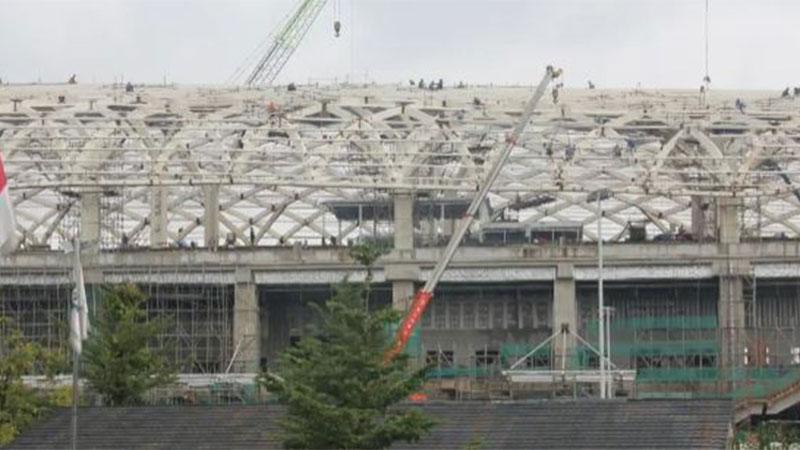It ripped through the corridors of Indonesia’s government like a shock wave: Kereta Cepat Indonesia China, which is 40% owned by Chinese concerns, in December proposed adding another 30 years to its 50-year concession of a high-speed railway under construction in Java.
If the Indonesian government cannot turn down the proposal, the railway would be under China’s influence until early in the 22nd century.
In 2015, Indonesian President Joko Widodo chose China over Japan to build the railway because the date of completion was set for as early as 2018, with trains to start rolling a year later. But construction remains ongoing. What appears to be a terminus station building in Jakarta retains a skeletal appearance with a roof of reinforcing steel bars but nothing more.
The delay has raised total construction costs by about 40%, forcing the Indonesian government to raid state coffers for 7 trillion rupiah ($468 million).
Now complaints about the decision to go with China over Japan can be heard from certain corners of the government.
It has been a decade since Chinese President Xi Jinping announced the Belt and Road Initiative, a massive infrastructure binge that would help Chinese products and influence spread around the globe. Since then, more than 150 countries, hungry for funds and infrastructure, have concluded deals with China.
But friction is now growing between many of these countries and their benefactor.
In 2020 and 2021, the parties began renegotiating the loan terms of 40 Belt and Road deals. This number represents an increase of 70% from the previous two years, according to an estimate by the U.S.-based Rhodium Group.
But information is hard to come by as China insists on nondisclosure agreements, a person familiar with Chinese deal making said.
Another study, one conducted by researchers from the World Bank, Harvard Kennedy School, AidData and the Kiel Institute for the World Economy, found that China had spent $240 billion bailing out 22 countries between 2008 and 2021, the researchers’ report revealed in March. The amount has been soaring in recent years as more recipients struggle to repay their Belt and Road loans, the report says.
That friction between China and its would-be beneficiaries is expected to increase as more projects flounder.
Jakarta’s worries about a possible 80-year concession are not unfounded. To find a precedent, it need only look across the Indian Ocean, to Sri Lanka.
There, the Hambantota Port in 2017 was leased to China for 99 years after the Sri Lankan government began having difficulty repaying the construction loans. The episode is considered a classic case of “debt trap diplomacy,” when a creditor nation extends an excessive amount of loans, then extracts economic or political concessions when the debtor country becomes unable to meet its repayment obligations. In this case, China won the use of a geostrategically important port.
With that precedent and unfavorable economic conditions prevailing around the globe, a growing number of countries are now wary of launching new projects with China. Indeed, Beijing’s ambitious infrastructure projects have slowed in recent years.
The centripetal force exerted by the U.S. is also showing signs of decline.
The leaders of the Community of Latina American and Caribbean States (CELAC), which consists of Brazil, Mexico and 31 other countries, held a summit in January. The U.S. is not a CELAC member, although it has long considered Latin America to be its “backyard.” A simple reference to the member states’ commitment to solutions to intraregional problems, as mentioned in a joint declaration adopted at the summit, connotes the exclusion of the U.S.
The region also has the U.S.-led Organization of American States (OAS), which has not been a happy family of late, as exemplified by the leaders of Mexico and Venezuela refusing to attend summits.
The words and deeds of former President Donald Trump undermined OAS members’ trust in the U.S., a feeling that still lingers.
As for China’s standing in the international community, British research firm YouGov routinely surveys people in more than 20 countries, and its findings are intriguing. In 2022, 35% of respondents said they had a good image of China, down from 49% in 2019.
Although the U.S. was viewed positively by an average of 55% of respondents, it scored lower than China in Thailand, Greece, Turkey and Saudi Arabia.
Neither superpower has been able to win extensive respect. Perhaps the message here is it takes more than money and a strong military to expand influence in today’s shaky, bipolar world.

